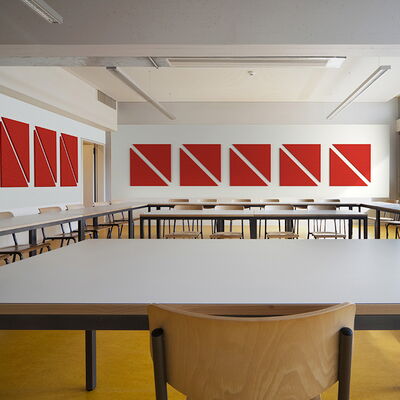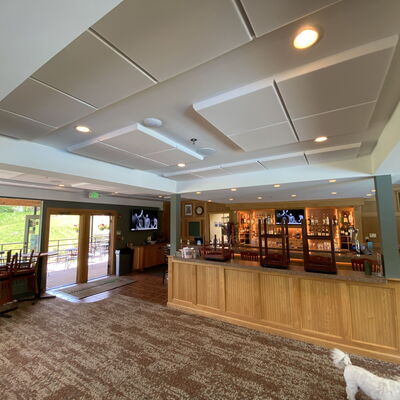- DDS Acoustical Specialties
- Applications
- Architectural
- Recording Studios
Achieving Pristine Sound Quality
In recording studios, achieving exceptional sound quality is paramount. Any unwanted noise or acoustic interference can compromise recordings, disrupt sessions, and hinder the creative process. Effective recording studio noise control is essential for creating an acoustically optimized environment that supports clear, accurate sound capture, ensuring that every note, vocal, and beat is recorded with precision.
Recording studio noise control solutions include acoustic panels, bass traps, soundproofing materials, and isolation techniques specifically designed to manage sound reflections, reduce noise, and prevent external disturbances. These solutions work together to absorb, block, and diffuse sound, creating an ideal recording environment with minimal background noise and reverberation. By investing in professional noise control measures, recording studios can enhance their acoustic performance, deliver higher-quality recordings, and provide a superior experience for artists and producers.
Implementing noise control in recording studios not only improves sound quality but also demonstrates a commitment to excellence in music production. Whether designing a new studio or upgrading an existing space, noise control is a critical component in building a professional recording environment that meets the highest industry standards.
Ensures pristine sound quality, precise audio production, noise isolation, creative focus, and a professional environment that attracts top clients.
Benefits of Recording Studio Noise Control
- Reduced Echo and Reverberation
- Pristine Sound Quality
- Less Post-Production
- Noise Isolation
- Improved Workflow
- Professional Studio Quality and Reputation
Most Often Used Products

Fabric Wrapped Acoustic Panels
Great acoustics are essential in all public and private environments. Whether you're designing a quiet office, an inspiring classroom, or an immersive performance space, managing noise and controlling sound reflections is critical.

Acoustic Foam
Acoustic foam offers an affordable, flexible, and effective solution for managing echo, reverberation, and excess noise.

Stretch Fabric Systems
Stretch fabric wall and ceiling systems offer a flexible, high-performance acoustic solution for spaces where design precision and visual impact are key.

Acoustic Sound Diffusers
In the world of architectural acoustics, achieving optimal sound quality is about more than just stopping noise—it's about shaping it. Create balanced, natural-sounding spaces by scattering sound waves.
Frequently Asked Questions
A:
Noise control ensures pristine sound quality by minimizing unwanted background noise, reflections, and echo, creating an ideal environment for high-quality recordings.
A:
Acoustic treatments like bass traps, diffusers, and absorbers reduce unwanted sound reflections and resonance, ensuring recordings are accurate and free of distortion.
A:
Effective solutions include soundproofing walls, floating floors, acoustic panels, bass traps, and isolation booths to create a controlled and quiet recording environment.
A:
Yes, soundproofing materials like mass-loaded vinyl, resilient channels, and acoustic doors and windows prevent studio noise from leaking out, maintaining privacy and avoiding disturbances to neighboring spaces. Additionally, absorbers and diffusers within a studio help lower the overall noise level within the space so less is leaking out.
A:
A well-treated room ensures accurate sound reproduction, allowing engineers to mix and master tracks with confidence and precision.
A:
Absolutely. Acoustic solutions can be tailored to fit the specific dimensions and requirements of any recording or production studio.
A:
High-quality acoustics demonstrate professionalism, attract clients, and elevate the studio’s reputation as a reliable space for top-tier audio production.

